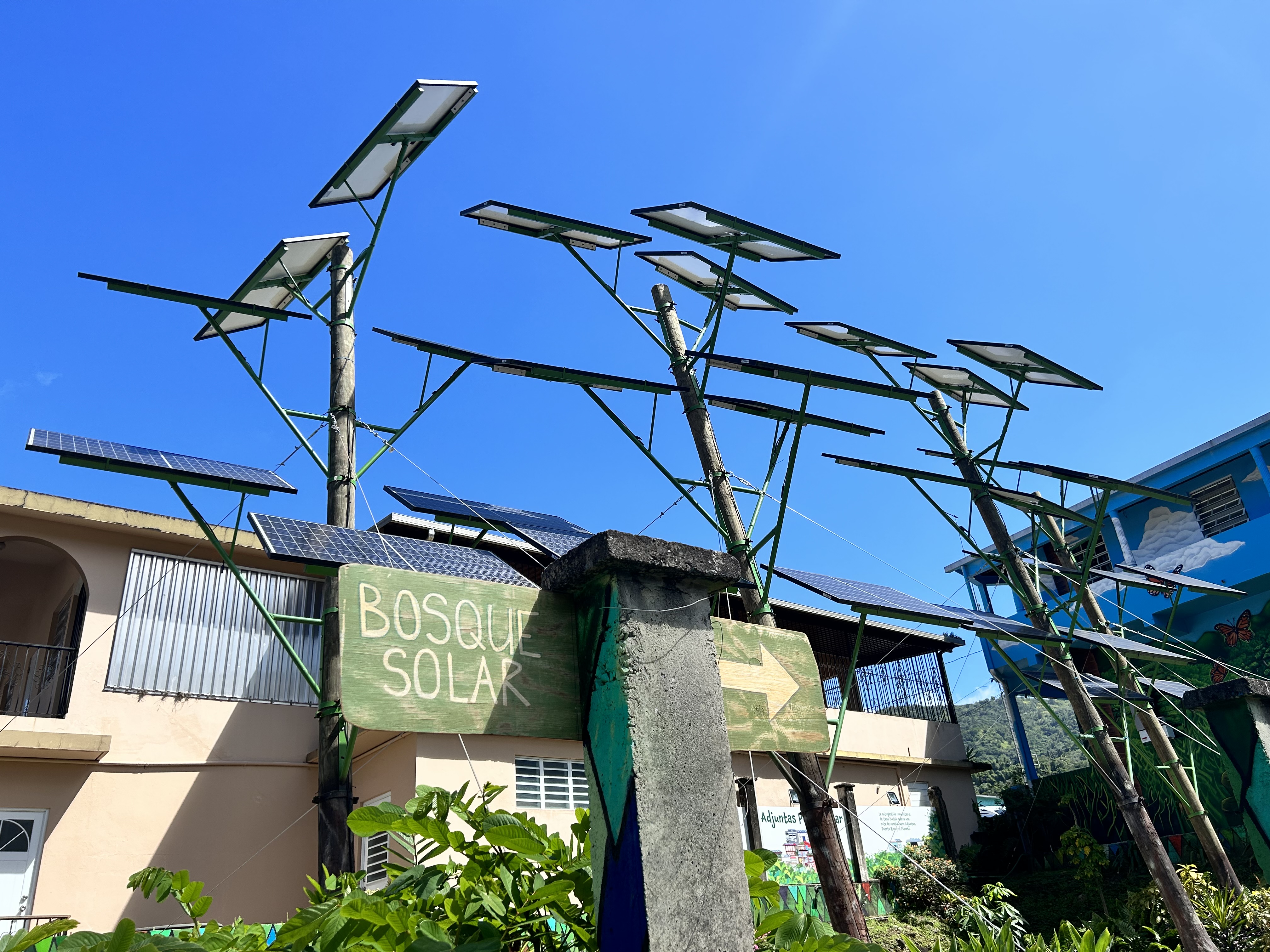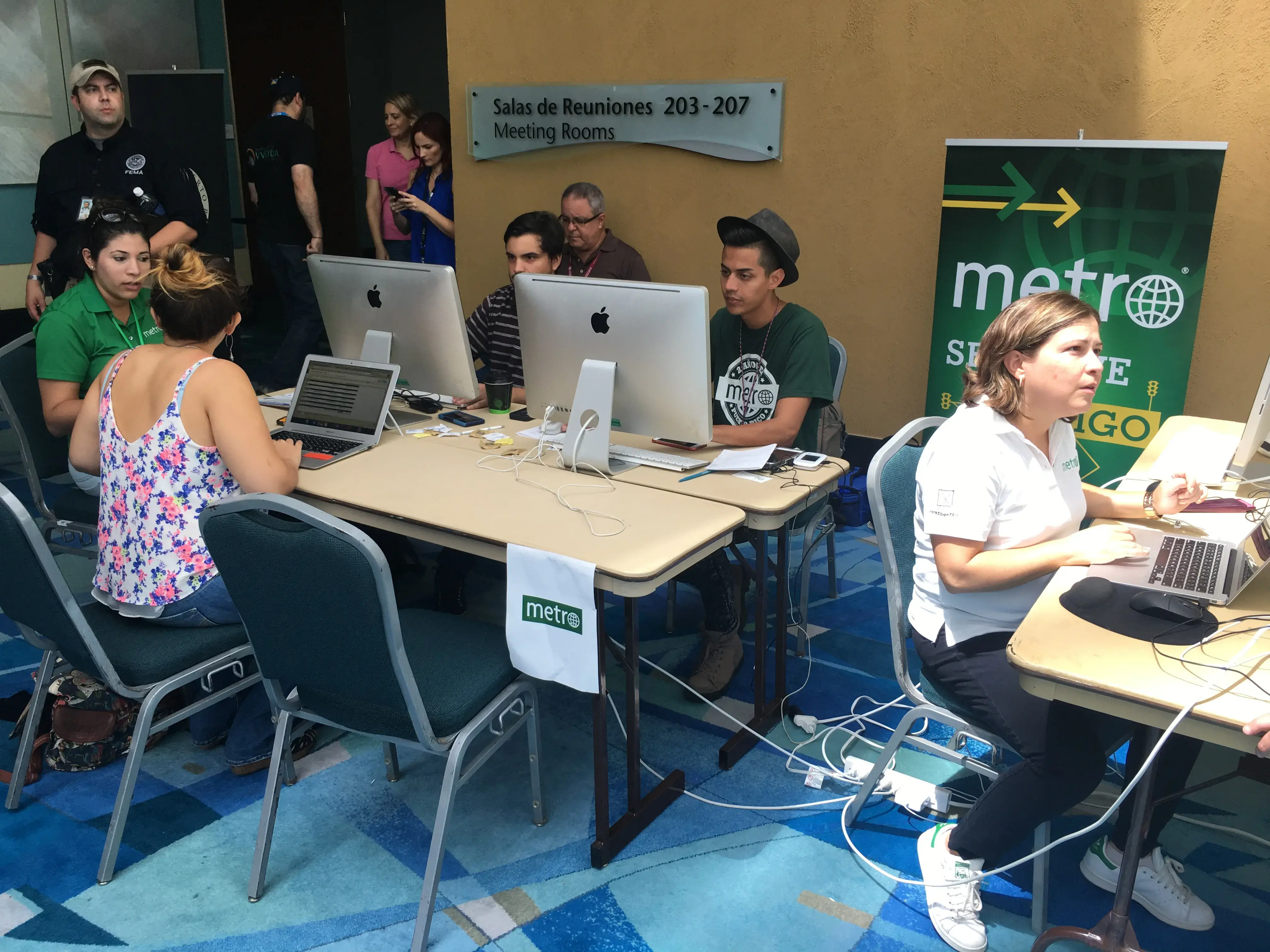
News landscape shrinks as outlets adapt, armor for future storms
Like many Puerto Rican journalists, Gerardo Alvarado León went to his hometown of Ponce to report on the aftermath of Hurricane Maria, the catastrophic storm that demolished the island in September 2017. Many of the people he spoke with initially thought he was there to render help from the government. He said he felt hopeless after a woman whose house was destroyed told him she wondered why she hadn’t died.
Six years later, Maria is still in the news.
“The impact has been threefold because we lived through it, we haven’t gotten over it and we continue to cover the trauma,” said León, now a deputy editor at El Nuevo Día, one of the island’s legacy newspapers. “We write about Maria every day. You open the paper, and every day there’s a reference to Hurricane Maria.”
When the storm knocked out Puerto Rico’s electric grid, most news temporarily stopped. Yet some of the journalists’ most important work didn’t come until much later.
For example, former President Donald Trump insisted that Maria’s death toll was fewer than 20. But the nonprofit Centro de Periodismo Investigativo (CPI) partnered with the Associated Press and Quartz to unveil the causes behind 487 deaths that came after the hurricane. Ultimately, George Washington University published findings estimating that 2,975 people died, while Puerto Rico’s then-governor initially said the official death toll was 64, according to El Nuevo Día. Governor Ricardo Rosselló Nevares later accepted George Washington University's estimate of 2,975 deaths, the report in El Nuevo Día said.
Journalists continue to publish stories about the management of relief funds and efforts to rebuild infrastructure the storm swept away. They’re still writing about how the recovery has been slow, to correct misinformation and to call attention to the personal and financial losses and unhealed trauma that comes with each hurricane season, León and his El Nuevo Día colleagues said.
But they face their own challenges from finding new jobs after layoffs to preparing for the next storm as some media groups wrestle to rebuild and survive.
“I think that we had many years without journalism that responded to the necessities of the country,’’ said Carmen Enid Acevedo, founder of Bonita Radio. “That has changed and has been getting better because of all those historic incidents that have happened in the past five years, which has given the country a different level of consciousness.”
Confronting change
In the months after Maria struck, journalists worked out of a makeshift newsroom the government set up in the Puerto Rico Convention Center. It gave them easy access to government officials who held press conferences there, as many of their own newsrooms suffered damage and didn’t have electricity.
Working at the convention center for months made the leadership of CPI realize the need for a self-reliant newsroom, executive director Carla Minet said.
“After Hurricane Maria, we were in the same situation as the majority of the population,” she said. “It was a very precarious situation when we didn’t have electricity in many of our homes. Most of us didn’t have water. That limited our work in a way.”
GFR Media reporters and their families took refuge in the company’s headquarters, which used diesel generators for 46 days to keep on the power, general director Rafael Lama said. Like many others, the company, which owns El Nuevo Día and is one of Puerto Rico’s largest media conglomerates, was not prepared for damage caused by the storm, but it provided food, water and electricity to its employees.
León’s apartment didn’t have any physical damage, but he said he lived at the GFR offices for a week to have access to electricity and water.
“The newsroom turned into a home; it was a refuge,” León said. “Colleagues came with their whole families, wives, husbands, children. It was like a community.”
Since gas was also scarce, the company established partnerships with gas stations to fill up the tanks of journalists on assignment, Lama said.
Others in the industry weren’t so lucky.
Improvising
Aiola Virella, editor of the weekly Metro PR in San Juan, made it to her newsroom to find that water had made its way in. Broken ceiling tiles littered the floor. The staff moved to the convention center, but working so close to the government wasn’t a perfect solution either, Virella said.
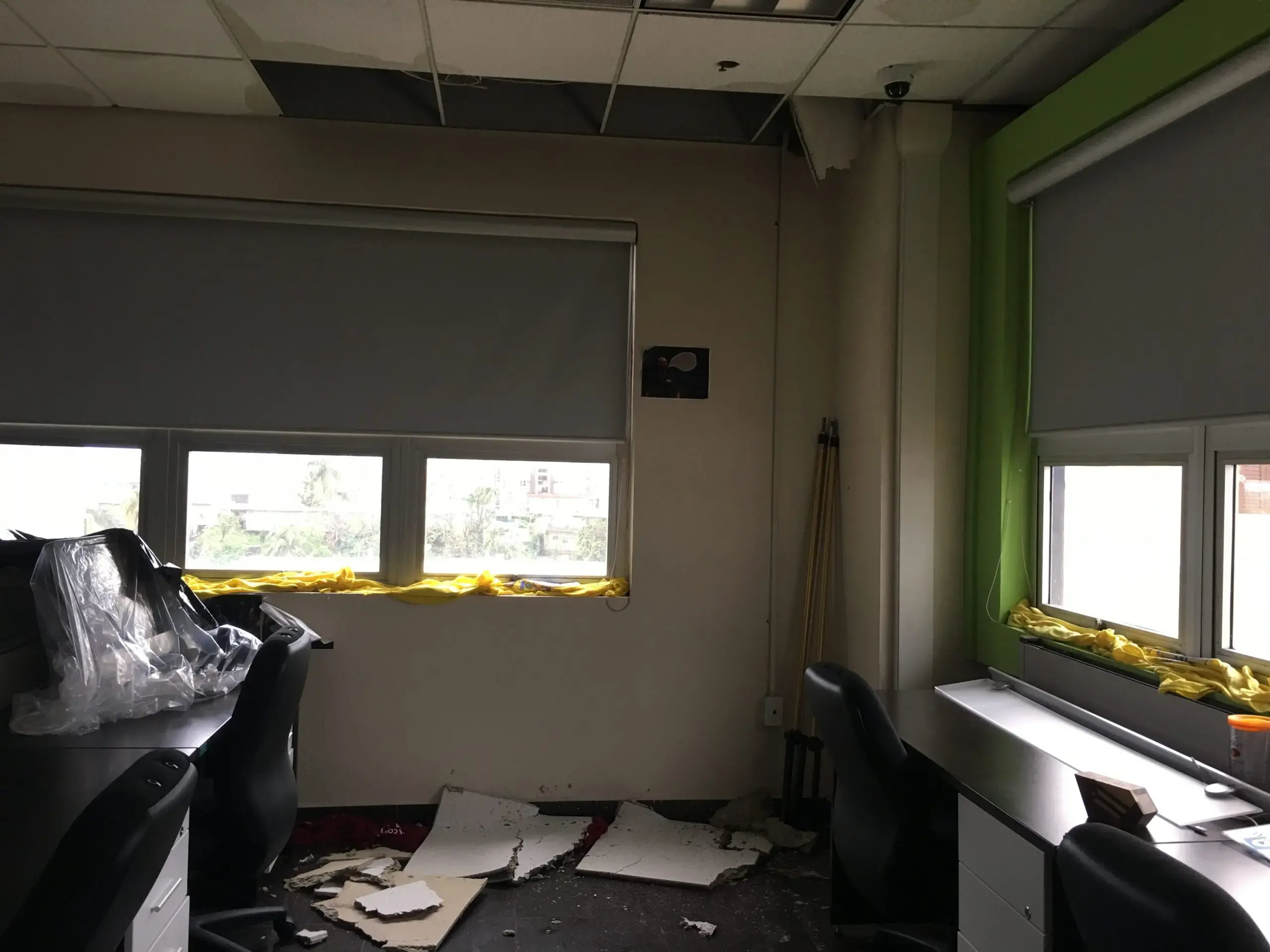
“The challenge was avoiding falling into the official narrative because we were right next to the government,” she said. “We would send two journalists to gather information from the public, and that’s how we created a balance.”
Not every outlet owned its office space, as is the case for La Perla del Sur, which serves Puerto Rico’s second-largest city, Ponce. When the power went out, the team worked from one of the hotels owned by the outlet’s parent company, Hotel Meliá. This is not a foolproof plan, though.
In the hurricane seasons since Maria, journalists have wondered how the industry might fare in another hit of the same magnitude. As they take steps to armor their outlets, they say survival will depend on who can keep the lights on, literally. After Maria, it took 11 months for the government to restore power. And since LUMA Energy took over the island’s power grid, Puerto Ricans have complained about frequent blackouts, which also happened last year during Hurricane Fiona, according to Politico.
Jason Rodríguez Grafal, the digital platforms editor at La Perla del Sur, isn’t optimistic.
“Right now, a Maria hitting Puerto Rico would kill half of the news outlets,” Grafal said.
Fiona in 2022 was the last storm to make landfall in Puerto Rico, but warming oceans act as fuel for storms.
Forecasters from the National Oceanic and Atmospheric Administration updated their predictions during the middle of this hurricane season because of “record-warm sea surface temperatures.” While 2023 has seen eight hurricanes, Puerto Rico hasn’t been on the path.
Still, the anxiety doesn’t end until the season ends in November.
Hurricane preparedness is often the responsibility of individual journalists, those interviewed said. Not having plans set ahead of time can be costly. Photojournalist Carlos Rivera Giusti said he waited in a three-hour queue after Maria to get a generator for his home, which cost $1,000.
Gasoline-fueled generators are the most common alternative for Puerto Ricans, but a few outlets are turning to solar energy to strengthen their infrastructure and prepare for the next storm. The shift to solar energy seems inevitable if the island is to meet its goal of getting all of its electricity from renewable energy.
In a mountain town of around 17,000, nonprofit Casa Pueblo, whose focus has been climate justice since it was founded in the 1980s, kept information flowing through its radio station and satellite phones after the storm, thanks to solar power. A generator still powered the Adjuntas-based station’s transmitter and antenna.
“There has always been a commitment of the radio station to communicate when there are storms coming near us. But the role, in the middle of and after Maria was much more intense,” said Arturo Massol Deyá, Casa Pueblo’s director. “Although we had certain preparations, I don’t think anybody in Puerto Rico was ready to face the path of Hurricane Maria.”
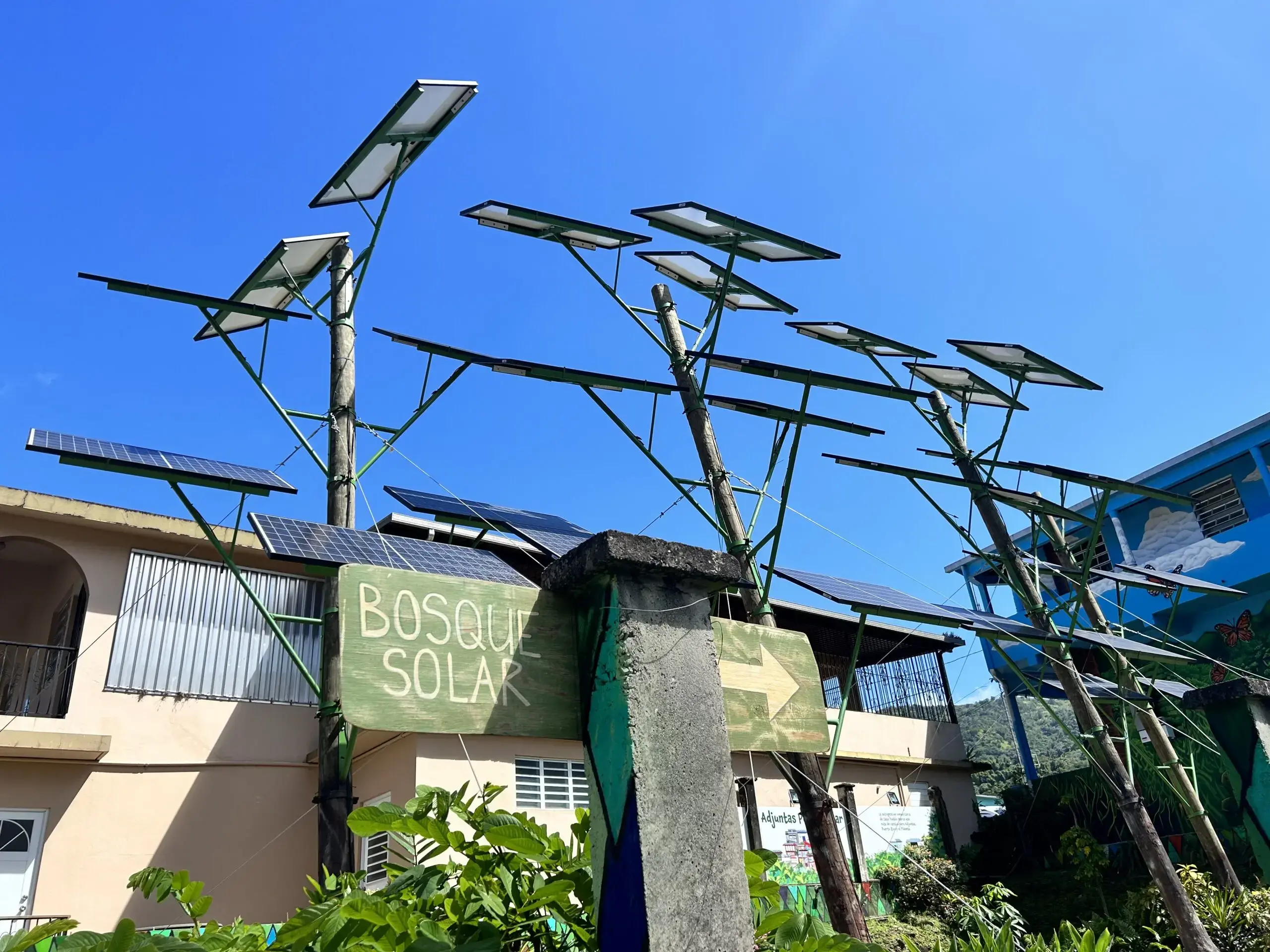
In 2018, Casa Pueblo installed 42 solar panels to power the transmitter, which made it the first radio station in the Caribbean to be powered through solar energy. Metro PR reported that the project cost $73,000. Massol Deyá said more outlets needed to follow through, pointing out that Radio Casa Pueblo is not dedicated to airing news 24/7 like a typical radio station.
“The country is collectively frustrated with the reality of electricity, but the media has to change too,” he said. “They can’t delegate their responsibility to something that is collapsed, useless, and that the whole country knows doesn’t work.”
CPI held a fundraising campaign in 2021 to install solar panels at its office in San Juan, said executive director Minet. Solar energy only kicks on when there are blackouts. CPI's next infrastructure project is to install a system to collect water, she said.
As hurricanes grow fiercer and more unpredictable, like Otis — which made landfall in Acapulco, Mexico, as a Category 5 hurricane on Oct. 25 — journalism becomes more important to monitor not only the loss of life, but the way to recovery.
“The process gave local journalists, not only journalists at CPI, many lessons in terms of how important it is to question official accounts the government offers in contexts of disasters,” Minet said.
New media strategy
Fallout from Hurricane Maria also took a toll on Puerto Rico’s media, as journalists faced layoffs and outlets closed.
GFR Media laid off 59 staffers five weeks after the storm. Radio stations such as Radio Vieques went off the air permanently because they couldn’t afford to repair the damage to their infrastructure. Other radio and television stations with bigger affiliates stopped airing their local programming. Those are just some of the challenges Federico Subervi-Vélez, a research fellow at the University of Wisconsin-Madison, chronicled in “The News Media in Puerto Rico: Journalism in Colonial Settings and in Times of Crises," a book he co-authored.
As journalists saw their numbers dwindling, competition took a backseat. Virella, a journalist for 27 years, saw the impact on her own paper. After 2020, Metro PR stopped daily publication and scaled back to printing once a week while maintaining its online presence. Once the crisis started in the industry, collaboration among newsrooms became necessary.
“The big outlets stayed big … but the smaller ones, we started seeing that we either formed alliances, or we were going to disappear,” she said.
One of those alliances is with CPI, which is a digital organization. Metro PR publishes its investigations in print. La Perla del Sur also amplifies the center’s work.
Minet credits their collaborative working style as one of the reasons the nonprofit CPI has thrived since its founding in 2008.
“Working in collaboration with other outlets has been part of our nature for many years. It allows us to make impactful stories, publish more stories, work on stories faster and even implement resources that our team doesn’t have and others bring to the table, such as sources and mediums like television,” Minet said. “Television is not part of our usual work, but that way we can explain our stories in a different manner.”
For four decades, La Perla del Sur served Ponce. But in 2022, the weekly paper closed for two months. The closure came after the outlet had survived Maria, a series of earthquakes at the end of 2019 and the COVID-19 pandemic, its executive editor, Omar Alfonso, said. It reopened under new ownership and in an online-only format.
"I think that we had many years without journalism that responded to the necessities of the country. That has changed and has been getting better because of all those historic incidents that have happened in the past five years, which has given the country a different level of consciousness."
—Carmen Enid Acevedo, Founder of Bonita Radio
The process of getting back on its feet during the relaunch forced its editors to rethink the outlet’s reliance on ad revenue. The online version has ads, but Alfonso said he wants to operate La Perla del Sur as a nonprofit someday. He cited CPI as an example of diversifying revenue streams since funding for the center not only comes from donations but also from hosting events.
“We have rescued the name, the outlet, the staff, but we still have to save the legacy and identity. That’s what has changed,” he said.
Outlets should focus on achieving financial independence, Grafal said.
“The crux of the matter is finding how an outlet — with its own talent and its own staff — can generate enough revenue to sustain itself without depending on a philanthropist that might say, ‘I’m going to finance you for a year,’ and when the year is over and that client leaves, then you’re back in the same place,” he said.
Still, much of the industry’s survival depends on Puerto Rico’s economy and advertisements, Subervi-Vélez said. Puerto Rico’s economy had been tumultuous even before Maria. The island just formally exited bankruptcy last year.
“On the other side of the equation is the growing independent media. People like Sandra Rodríguez Cotto, Jaime Torres Torres, El Post Antillano by Daniel Nina and many others are making inroads, although not massively,” he said. Cotto is also a co-author of “The News Media in Puerto Rico: Journalism in Colonial Settings and in Times of Crises.”
“But they’re making inroads because they don’t depend on the advertising structure of the great commercial media,’’ Subervi-Vélez said. “But their outreach is limited and the content that they can produce is also limited. So altogether a very challenging outlook for the commercial media, some hopeful outlook for the independent media.”
An independent press
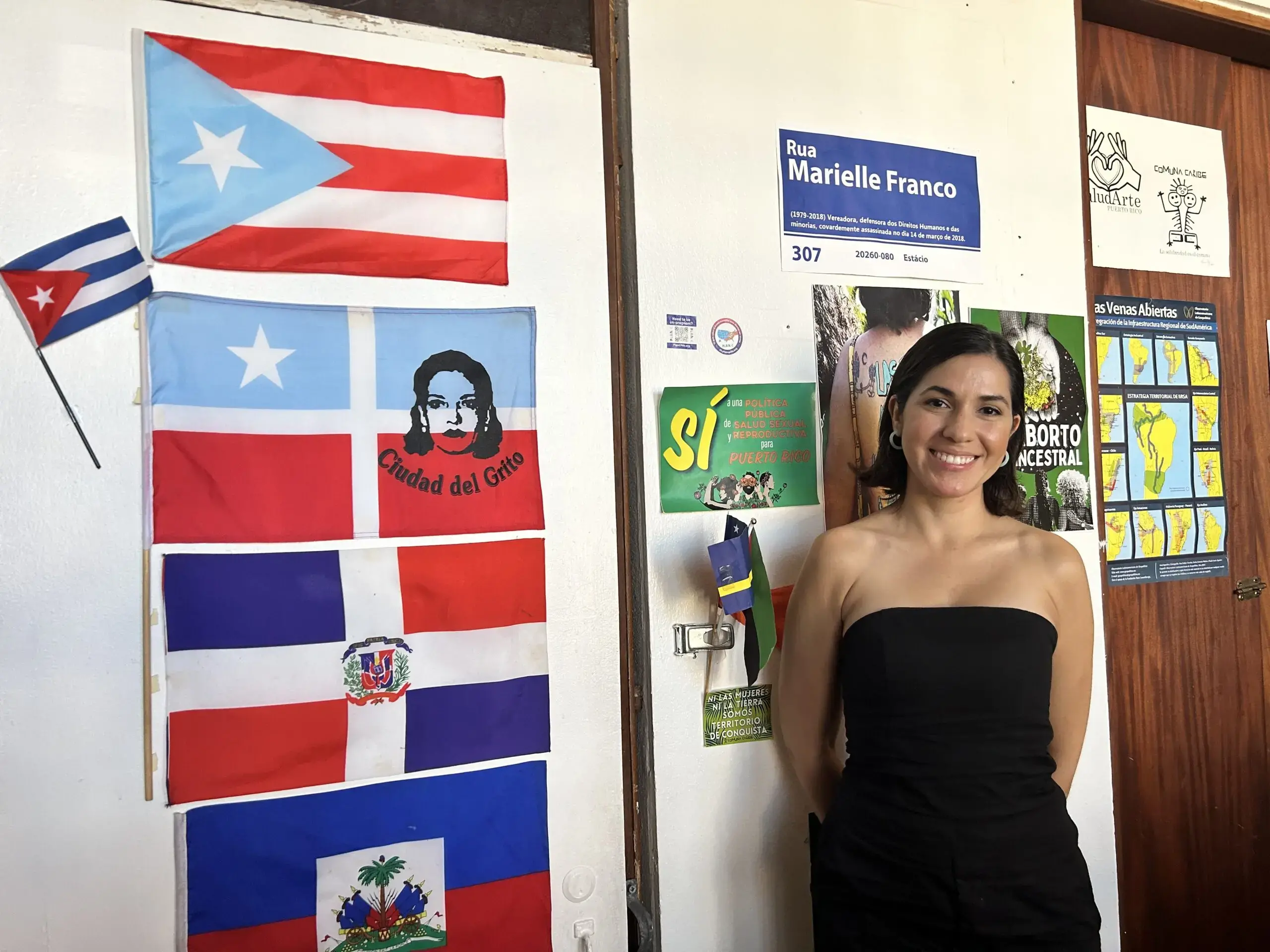
Cristina del Mar Quiles is a journalist with CPI, but she also launched a feminist news outlet called Todas in 2018. All of its co-founders have other jobs and its reporters are freelancers, she said. Next year, she hopes to be able to employ journalists full-time.
“In truth, this project started through us volunteering our work. We didn’t know anything about entrepreneurship — a lot about journalism, nothing about entrepreneurship,” del Mar Quiles said. “So, that means that you do a lot of work out of passion because you want to do it and make it prosper. But, we were late to begin to identify financing opportunities.
“We have obtained some in the past years, and they have been increasing, meaning that the organizations that have bet on our work have said they want to give us more funds. That is what has allowed us to pay our freelancers.”
Torres is one of the retired journalists behind some of the emerging independent media projects. He spent 25 years working for GFR Media before launching Prensa Sin Censura — Press without Censorship — five years ago. Since then, the journalist based in northeast Puerto Rico reports from all over the island.
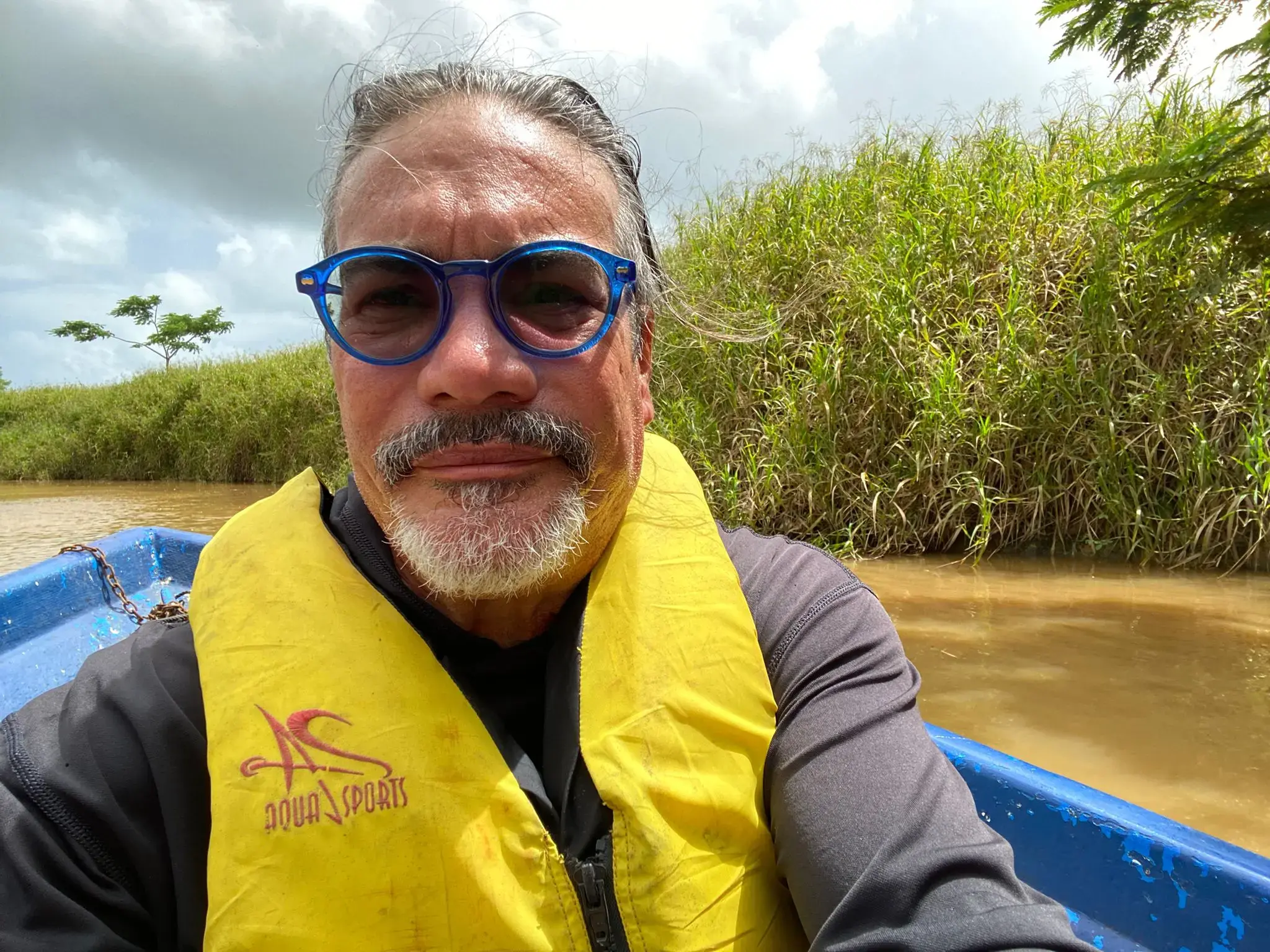
“This project coincided with my retirement and pension that keeps me afloat, provides enough to pay the bills and allows me to maintain my independent outlets,” Torres said. “I have to pay for a website domain; I have to pay for membership fees to operate. In comparison with my experience in corporate media, the financial aspect is drastic. But my case is an exception. I don’t make a living from journalism. For me, journalism is a vocation and a contribution to my country.”
Michelle Estrada knows how hard it is for journalists to establish outlets like Todas. In between getting furloughed by GFR Media after Hurricane Maria and joining La Perla del Sur when it re-opened, she ran Voces del Sur, a digital newspaper, with her husband. Ultimately, they stopped the project in 2021 because of the economic downturn during the COVID-19 pandemic, Estrada said.
She plans to exit the industry soon.
“I don’t think that I have it in me to continue being a journalist for more than two years, but it is a personal decision that I have made. I have prepared myself for that. I think that in the next half of my life, I will do something else,” Estrada said. “But I continued being a journalist this long because I like it because it is a profession that fulfills me.
“I want to contribute to my country from this place, and I was getting paid. … I continued doing it because I could make a living. Now, I am in a place where I feel comfortable. Nevertheless, that hasn’t been the case for many other colleagues.”
The accumulation of trauma from Maria and the earthquakes proved to be a tipping point for Estrada toward her decision to change career paths.
“It’s exhausting. It tires me. From 2017 to now we have aged rapidly. That takes away my inner peace too,” she said. “You try to accommodate your life … but your parents are getting older. We are in the age of raising kids, but we also have to take care of our parents. I don’t have children but I am on the side that I care for my parents.”
It’s a feeling shared by others.
“That is what happens here in Puerto Rico. It has been a nonstop trauma since Maria,” León said. “It was Maria, the summer of ‘19, the earthquakes, the pandemic, Fiona. So, it has been like a trauma that we have not stopped enduring.”
Connecting through social media
Prensa Sin Censura’s Facebook page has amassed 20,000 followers, he said. Lately, he has started hosting citizen journalism workshops to teach people how to use industry skills to keep their communities informed.
Bonita Radio is another endeavor that leans on Facebook and YouTube to deliver the news. The emergence of a student community radio program inspired Acevedo to create Bonita Radio in 2011, she said. At that time, she wasn’t working in journalism, but she had worked for corporate newsrooms for 35 years.
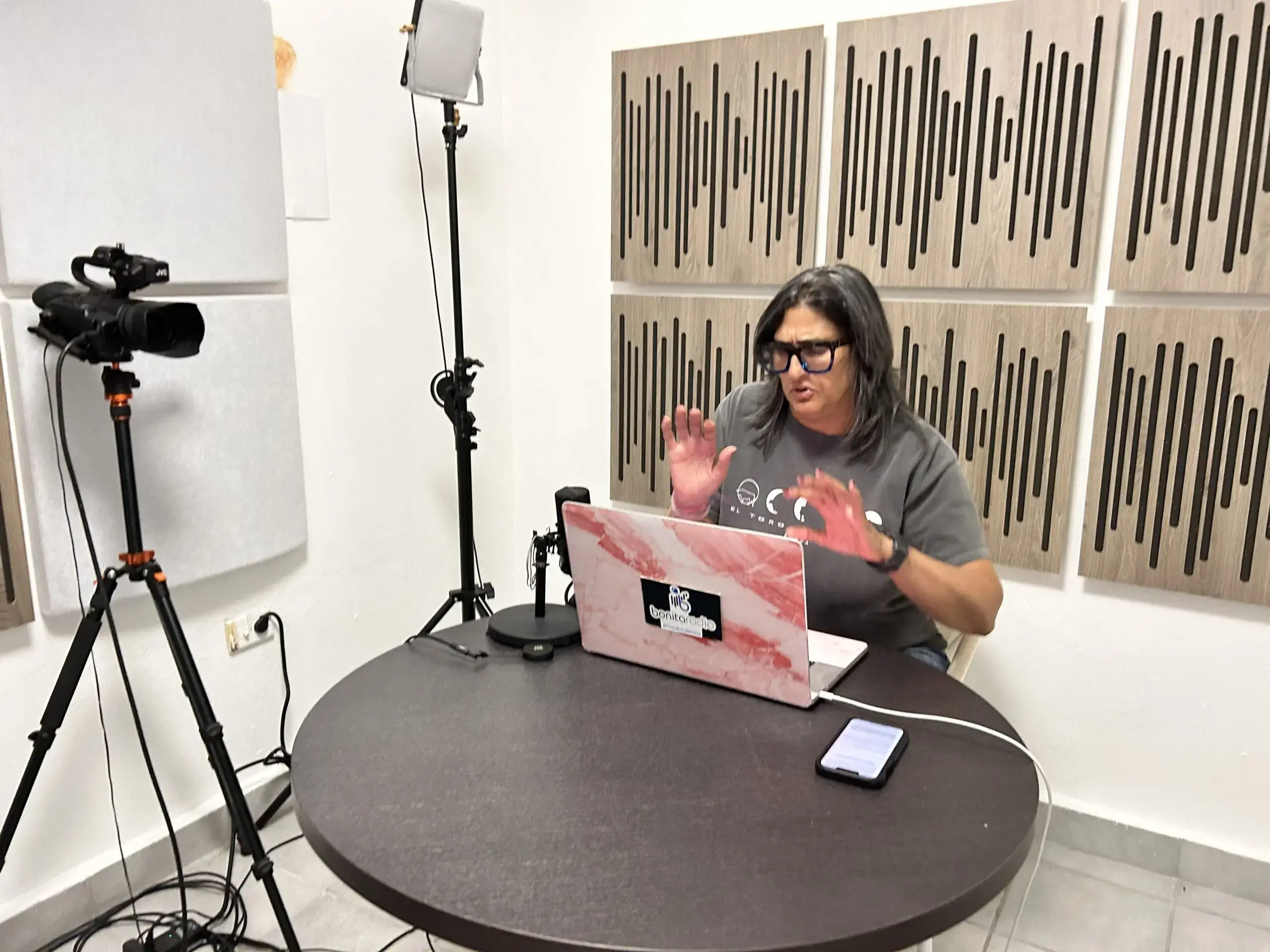
Although Bonita Radio has a website, she said most people interact with the outlet through social media. She has 81,000 followers on Facebook, where she posts frequently throughout the day. Her project has been around for over a decade, but she said that it only really gained traction over the past few years.
Acevedo said: “Puerto Rico has an advantage because it has a population that is educating itself in relation to what journalism should do in a society.”


